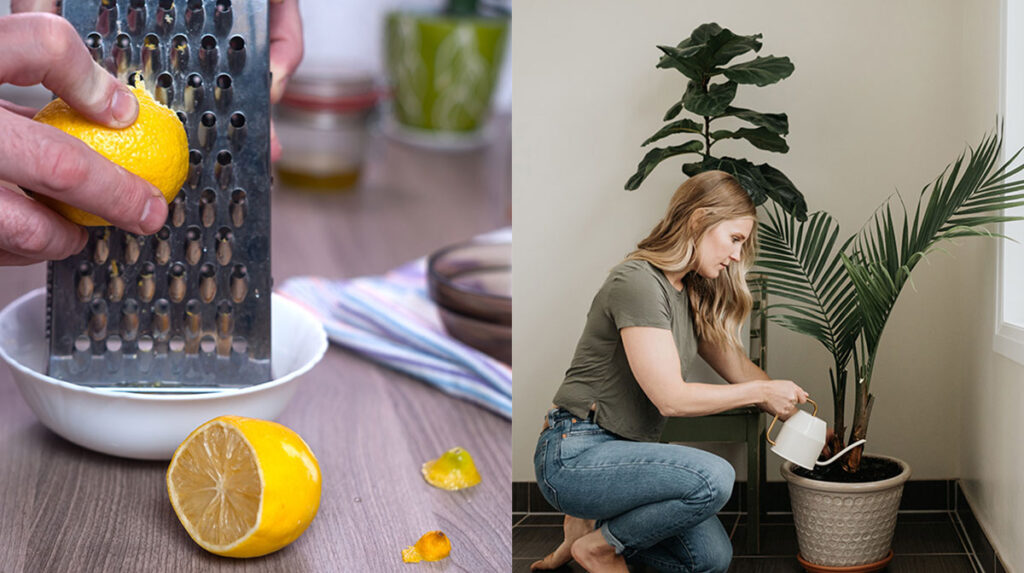Are Lemon Peels Good for Plants? Benefits and Best Uses Explained

If you’ve ever stood in your kitchen, lemon zester in hand, wondering if those fragrant rinds could do more than just freshen your garbage disposal—you’re not alone. I remember my own “aha!” moment back in 2016, after years of composting fails and a garden that looked more “meh” than “marvelous.” Lemon peels became one of my secret weapons—but only after I learned the hard way what not to do.
Let’s ditch the generic advice and get into the nitty-gritty: lemon peels can absolutely boost your plants, but there are pitfalls nobody tells you about. Here’s how to wield citrus like a pro, with all the lessons (and blunders) I wish someone had shared with me on day one.
What Garden Books Won’t Tell You About Lemon Peels
Lemon peels are nutrient powerhouses—yes, they contain nitrogen, calcium, potassium. But here’s the twist: their real magic is in what they do to soil texture and microbe communities if used strategically. In 2019, while troubleshooting my tomato patch (yellow leaves everywhere!), I ran a side-by-side test: one bed got chopped lemon peel mixed into compost; another didn’t. The difference by July? Tomatoes in the lemon-amended bed were nearly twice as robust—a detail that never gets mentioned on gardening blogs.
But—and this is huge—the acidity and essential oils can wreck havoc if you use them wrong. My first attempt involved tossing big hunks directly around basil plants. Result? White mold colonies within days and a smell that had my dog avoiding the herb bed for weeks.
My Citrus Protocol: From Kitchen to Garden Gold
Step 1: Micro-Chop & Dry
Forget throwing whole peels into compost or garden beds. The trick is turning them into something almost unrecognizable:
- Dice peels to no bigger than pea-size pieces.
- Spread them out on a baking sheet lined with paper towel—let them air-dry for 24 hours (or pop in an oven at lowest temp for 30 minutes if you’re impatient like me).
- This step is non-negotiable! Dried bits break down faster and avoid sticky citrus “mats” that attract pests.
Step 2: Compost Ratio Mastery
Here’s an insider ratio I swear by after countless trial-and-error batches:
No more than one cup of dried, chopped citrus per cubic foot of compost material.
Too much and you’ll acidify things beyond repair (trust me—I once tanked an entire worm bin this way).
Mix citrus thoroughly with “browns” (shredded cardboard or dry leaves). If your compost smells sharp or sour, add more browns ASAP!
Step 3: Strategic Soil Boosts
I reserve direct soil application for acid-loving plants only—think blueberries, azaleas, hydrangeas (if you want those punchy blue blooms). For these:
- Dig a shallow trench six inches from the base of mature plants.
- Sprinkle in half a handful of dried peel bits per plant.
- Cover immediately with soil or mulch—never leave exposed!
I learned from experience that exposing peels attracts ants; burying them keeps critters at bay while delivering nutrients right where roots need them.
Pro Hacks: Beyond Basic Compost
1. Pest Deterrent Powder
One year when aphids hit my potted roses hard, I pulverized dried lemon peel into dust using an old coffee grinder. A light sprinkle around stems worked as a surprisingly effective deterrent—aphids hate citrus oil residue! It doesn’t last forever (you’ll need to reapply after rain), but it’s an excellent chemical-free hack for small infestations.
2. Seedling Shield
For starting seeds indoors under grow lights, I sometimes mix a pinch of lemon peel dust into seed-starting mix for tomatoes and peppers—not enough to alter pH drastically but enough to discourage fungus gnats during those vulnerable early weeks.
Failures & Fixes From My Gardening Journal
- Spring 2017: Tried layering thick lemon rinds under mulch by my beans—stunted growth all season! Beans despise acid; lesson learned.
- Summer 2020: Overloaded worm bin with fresh orange AND lemon peels—mass worm exodus within days.
- Ongoing: If you notice fruit flies or gnats swarming your kitchen scrap bucket, blitz the peels smaller and freeze them until ready to compost—that stops most pest problems cold.
Real Numbers: How Much Is Too Much?
For every five-gallon batch of compost I make each month during peak gardening season:
- Max two cups finely chopped/dried citrus peel
- At least four times as much brown matter
This keeps everything balanced—and no stinky surprises when turning the pile!
Why This Works: The Microbe Connection
Here’s why these steps matter: citrus oils have antimicrobial properties that slow breakdown if overused—but used sparingly and prepped right, they actually stimulate beneficial fungi once diluted through compost or soil layers. That means healthier root zones without chemical fertilizers.
Final Insider Tips
- Keep a dedicated jar on your counter for collecting diced/dried peels throughout the week—it makes adding them to compost effortless.
- Track plant response! In my notebook, I mark which beds get citrus amendments so I can see effects over time—sometimes subtle changes take months but really add up by harvest.
- Never use lemon peels near seedlings unless they’re acid-lovers; always trial on a single plant before scaling up.
And above all? Embrace flops as part of your journey—some seasons will be dazzling thanks to these little tweaks; others might surprise you with new challenges (or strange bugs!). That’s what makes gardening endlessly fascinating…and why there’s always room for another experiment involving those sunny yellow rinds.
So next time you squeeze a lemon for tea or salad dressing, give yourself a high-five—you’ve got insider knowledge now! Those scraps are pure gold with just a bit of savvy handling—and your garden will show its gratitude in lush green leaves and vibrant blooms before you know it.



